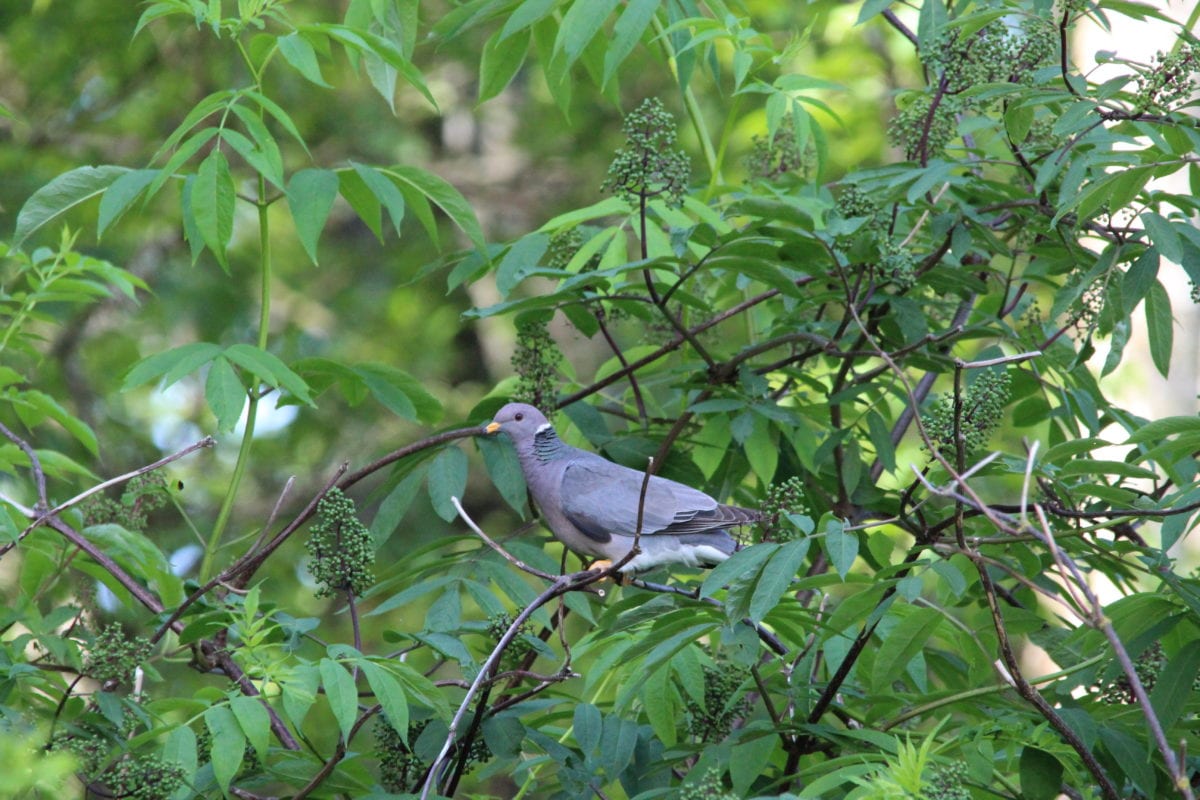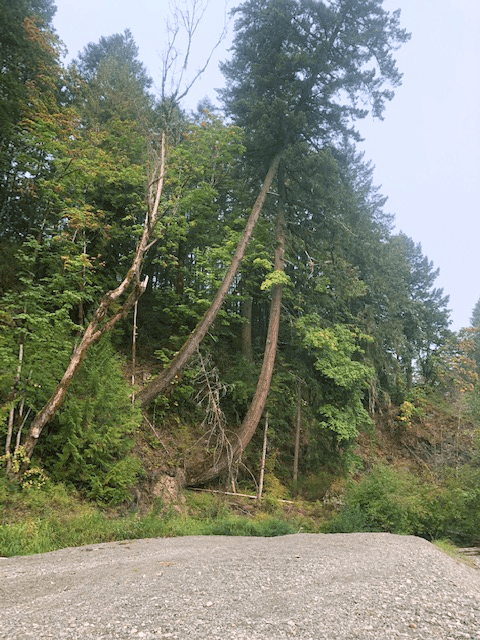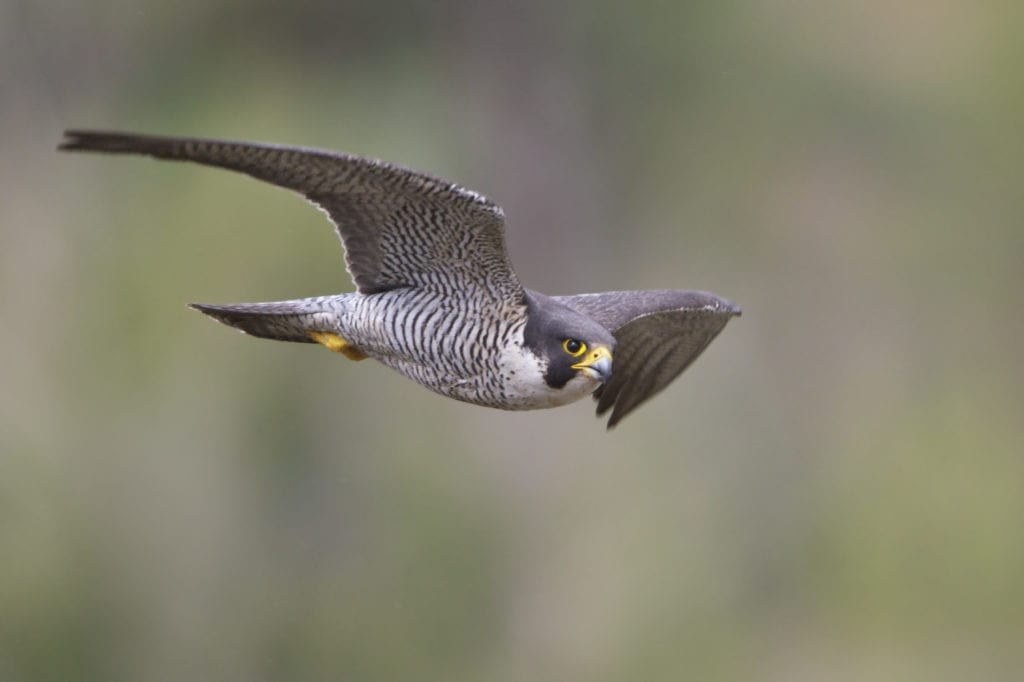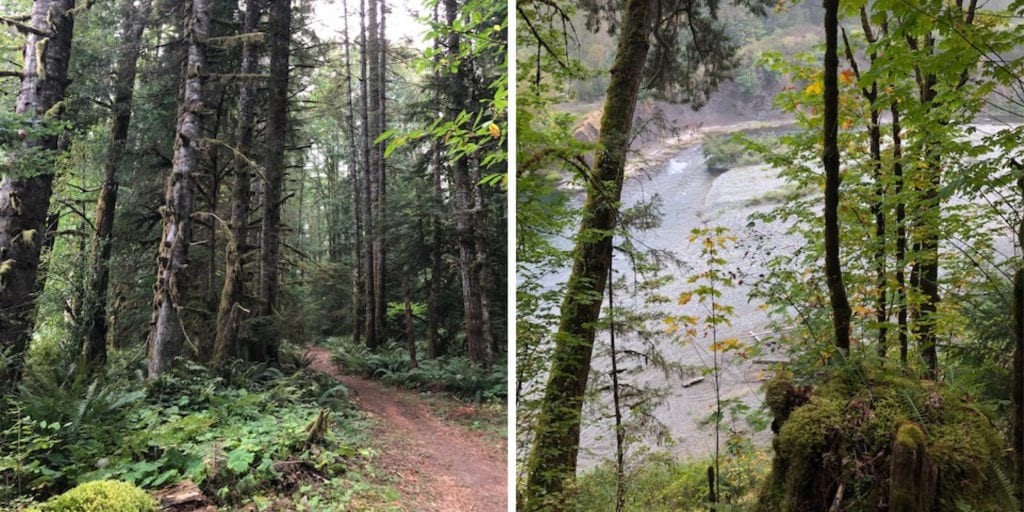
The Nature Trust is delighted to receive a donation of 14.6 hectares (36 acres) of forest and riparian corridor along the Cowichan River near Duncan, on Vancouver Island. For over 30 years, The Nature Trust of BC has been focusing on the Cowichan River. With our partners we have conserved 116 hectares (285 acres).
DOWNLOAD THE PDF OF THIS NEWS RELEASE
 The land owners reached out to The Nature Trust of BC when they decided that they wanted to preserve the wild space. They had enjoyed the property but were no longer using it, and decided that The Nature Trust could enhance and protect the property in perpetuity. The Nature Trust is currently fundraising for some immediate restoration work that is needed on the property, including safely removing some buildings that are no longer in use.
The land owners reached out to The Nature Trust of BC when they decided that they wanted to preserve the wild space. They had enjoyed the property but were no longer using it, and decided that The Nature Trust could enhance and protect the property in perpetuity. The Nature Trust is currently fundraising for some immediate restoration work that is needed on the property, including safely removing some buildings that are no longer in use.
The Cowichan River is designated as a Canadian Heritage River System because of its significant abundance and variety of fish. Historically, the river supported some of the largest spawning runs of Chinook salmon in the entire Georgia Basin, along with substantial runs of Coho and Chum salmon. The river provides habitat for the Blue-listed Cutthroat Trout as well as Rainbow Trout and Steelhead.
The Cowichan River–Gibbins Road property is in a relatively natural state consisting of primarily young with some mature coniferous forest ranging from 40 to 250 years old, as well as 400 metres of sensitive riparian ecosystems along the Cowichan River. Black Cottonwood, Bigleaf Maple, Western Redcedar, Common Snowberry, Douglas fir, Dull Oregon Grape, and possibly Grand fir all grow on the property.

Peregrine Falcon | photo by Glenn Bartley
The shores around Cowichan River abound with biodiversity and contain rare and vulnerable birds and other animals including the provincially Blue-listed Vancouver Island Ermine, Roosevelt Elk, Peregrine Falcon (SARA Schedule 1, special concern), Band-tailed Pigeon (SARA Schedule 1, special concern), Barn Swallow (SARA Schedule 1, threatened), and Yellow-listed Common Nighthawk (SARA Schedule 1, threatened). The Yellow-listed Western Toad (SARA Schedule 1, special concern) has been observed upstream and downstream of the property and have been known to breed along the shores of the Cowichan River.
The Cowichan River corridor is teaming with life. Riparian areas serve critical ecosystem functions and provide many benefits by maintaining water quality. The trees and plants provide important food sources for aquatic insects and sources of large woody debris as shelter for fish. The roots of these plants bind the soil and reduce erosion, while also filtering sediment from entering the water. The vegetation offers shade and wind protection, which helps regulate water temperature and offers essential habitat for insects, amphibians and other wildlife. Many of these species can only live in riparian areas. Other species use riparian areas as migration corridors between habitats.
A portion of this project was donated to The Nature Trust of British Columbia under the Government of Canada’s Ecological Gifts Program. This program provides enhanced tax incentives for individuals or corporations who donate ecologically significant land.

Elk | photo by Samantha Penner
Quotes:
“Recognized as one of Canada’s 40 Heritage Rivers, the Cowichan River watershed has a rich natural and cultural history. By protecting additional land along the river, The Nature Trust of BC, is not only helping to protect fish and wildlife habitat but is also contributing to the long term vision of a healthy and resilient watershed for future generations. A watershed that includes clean water, healthy fish and wildlife populations and continued recreational opportunities.”
- Tom Reid, West Coast Conservation Land Manager, The Nature Trust of BC
Facts:
- Located in the moist maritime Coastal Douglas-fir (CDFmm), the rarest biogeoclimate zone in BC and a provincial conservation concern. Only 11.2% of the Coastal Douglas Fir (CDF) zone is protected in either parks or conservation lands.
- The Cowichan River is designated as a Canadian Heritage River System because of its significant abundance and variety of fish. Historically, the river supported some of the largest spawning runs of Chinook salmon in the entire Georgia Basin, along with substantial runs of Coho and Chum salmon. Today it provides habitat for the Blue-listed Cutthroat Trout (clarkii subspecies), as well as Rainbow Trout, Steelhead, Coho, Chinook, and Chum Salmon and many smaller fish, such as prickly sculpin, threespine stickleback, and lamprey (Pacific and Western Brook).
- The following provincially listed ecological communities likely occur on the property: Red-listed Western Redcedar / Common Snowberry and Douglas-fir / dull Oregon-grape (Globally Imperiled (G2)); and Blue-listed Black Cottonwood – Red Alder / Salmonberry and Red Alder / Salmonberry / Common Horsetail. The Red-listed Grand Fir / Three-leaved Foamflower and Grand Fir / dull Oregon-grape ecological communities could also occur on a small portion of the property, and are both Globally Critically Imperiled (G1).
- The following provincially listed species were observed near the property: Blue-listed Vancouver Island ermine (historical), Roosevelt Elk, Peregrine Falcon (SARA Schedule 1, Special Concern), Band-tailed Pigeon (SARA Schedule 1 Special Concern), Barn Swallow (SARA Schedule 1 Threatened) and Great Blue Heron (SARA Schedule 1 Special Concern); the Yellow-listed Common Nighthawk (SARA Schedule 1 Threatened) and Western Toad (SARA Schedule 1 Special Concern).
- A young Garry oak stand occurs on the property. Garry oak ecological communities are considered to be Globally Critically Imperilled within BC.
- Cowichan River estuary is ranked as Importance Class 1 in BC. Importance Class 1 estuaries are the most ecologically valuable estuaries based on their size, their intertidal biodiversity and the variety of species that use their services.
*Feature image of Band-tailed Pigeon by Samantha Penner

